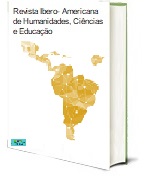A POLÍCIA MILITAR FRENTE AO RACISMO E DISCRIMINAÇÃO
DOI:
https://doi.org/10.51891/rease.v6i12.326Keywords:
Military Police, Constitutional Principles, Racism, Discrimination.Abstract
The social differences between whites and blacks are clear in everyday life. In addition to the economic aspect, in which black and brown people (the combination of these groups form the black classification, according to IBGE) are the majority among those with lower incomes, the persistence of situations of greater vulnerability, indicated by evidence in the fields of education , health, housing, among others, show evident imbalance in guaranteeing rights to the detriment of the black population. It is also possible to observe under-representation among team leaders in companies, judges and politicians. This article discusses that racism is characterized by the oppression of one ethnic group with more "power" over the other. When we talk about reverse racism, we start from the idea that the disadvantaged group is oppressing its oppressor. An ethnic group that suffered more than 300 years of slavery, being part of one of the last countries in the world to abolish slavery - a fact that is only 130 years old -, certainly would not have the same strength as its oppressor. In addition, there is the concept of modern slavery - work relationships in which people are forced to engage in activities against their will through forms of intimidation.
Downloads
Downloads
Published
How to Cite
Issue
Section
License
Atribuição CC BY

